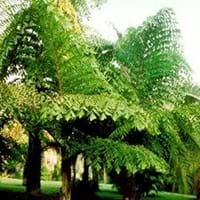Life Span
Perennial
Annual
Origin
North America, United States, Northeastern United States, Mid-Atlantic United States, Southeastern United States, North-Central United States, South-Central United States, Texas
Southeastern Asia, India
Types
not available
Not Available
Habitat
Boggy areas, Fens, Fields, meadows, Swamps, Woodlands
Forest edges
USDA Hardiness Zone
4-9
10-12
Sunset Zone
1a, 1b, 2a, 2b, 3a, 3b, 4, 5, 6, 7
H1, H2, 23, 24
Habit
Thicket/Colonizing
Upright/Erect
Flower Color
Not Available
Purple, Ivory
Flower Color Modifier
Not Available
Bicolor
Leaf Color in Spring
Not Available
Light Green, Dark Green
Leaf Color in Summer
Not Available
Light Green, Dark Green
Leaf Color in Fall
Not Available
Light Green, Dark Green
Leaf Color in Winter
Not Available
Light Green, Dark Green
Leaf Shape
Oblovate
Linear
Plant Season
Spring, Fall, Winter
Spring, Summer, Fall, Winter
Sunlight
Full Sun, Partial Sun
Full Sun, Partial Sun, Partial shade, Full Shade
Growth Rate
Medium
Medium
Type of Soil
Clay, Loam
Loam
The pH of Soil
Acidic, Neutral, Alkaline
Acidic, Neutral
Soil Drainage
Average
Well drained
Bloom Time
Late Spring
Indeterminate
Tolerances
Not Available
Not Available
Where to Plant?
Ground, Pot
Ground
How to Plant?
Divison, Seedlings
Seedlings, Transplanting
Plant Maintenance
Medium
Medium
Watering Requirements
Keep the ground moist but not water-logged
Does not require lot of watering, Use and maintain water-efficient soaker hoses, Use Mulches to help prevent water loss during hot and windy weather, Water in morning to avoid prompting diseases, Water twice a day in the initial period
In Summer
Lots of watering
Lots of watering
In Spring
Moderate
Moderate
In Winter
Average Water
Average Water
Soil pH
Acidic, Neutral, Alkaline
Acidic, Neutral
Soil Type
Clay, Loam
Loam
Soil Drainage Capacity
Average
Well drained
Sun Exposure
Full Sun, Partial Sun
Full Sun, Partial Sun, Partial shade, Full Shade
Pruning
Prune after flowering, Prune in early spring, Remove damaged leaves, Remove dead branches, Remove dead leaves
Remove damaged leaves, Remove dead branches, Remove dead leaves
Fertilizers
All-Purpose Liquid Fertilizer, Compost, Fertilize every year, Mulch, Nitrogen
All-Purpose Liquid Fertilizer
Pests and Diseases
Aphids, Apple Maggot, Fall Webworm, Red blotch, Scale
Red blotch
Plant Tolerance
Not Available
Drought
Flower Petal Number
Not Available
Single
Foliage Texture
Not Available
Bold
Foliage Sheen
Not Available
Glossy
Invasive
Sometimes
Sometimes
Allergy
Not Available
no allergic reactions
Aesthetic Uses
Showy Purposes
Borders
Beauty Benefits
Not Available
Not Available
Environmental Uses
Air purification
Air purification
Medicinal Uses
Not Available
Not Available
Part of Plant Used
Fruits
Sap, Stem
Other Uses
Used As Food, Used as Ornamental plant
Used in making beverages
Used As Indoor Plant
No
No
Used As Outdoor Plant
Yes
Yes
Garden Design
Cutflower, Mixed Border, Screening, Wind Break
Feature Plant, Hedges, Mixed Border, Screening / Wind Break, Tropical
Botanical Name
ARONIA arbutifolia
CARYOTA mitis
Common Name
Red Chokeberry
Burmese Fishtail Palm, Fishtail Palm
In Hindi
लाल Chokeberry
Fishtail palm
In German
Rote Apfelbeere
Fishtail palm
In French
Red Chokeberry
Fishtail Palm
In Spanish
rojo Chokeberry
Fishtail palma
In Greek
κόκκινο Chokeberry
ιχθυόφθαλμους παλάμη
In Portuguese
Red Chokeberry
Fishtail palma
In Polish
Red aronii
Fishtail dłoni
In Latin
arbutifolia
fishtail palma
Phylum
Magnoliophyta
Not Available
Class
Magnoliopsida
Not Available
Family
Rosaceae
Arecaceae
Clade
Angiosperms, Eudicots, Rosids
Angiosperms, Commelinids, Monocots
Tribe
Not Available
Caryoteae
Subfamily
Not Available
Coryphoideae
Number of Species
Not Available
Difference Between Red Chokeberry and Fishtail Palm
If you are confused whether Red Chokeberry or Fishtail Palm are same, here are some features about those plants to help you choose better. Many people think that these two plants have the same characteristics, but one can see Red Chokeberry and Fishtail Palm Information and learn more about it. Fertilizers required for proper growth of Red Chokeberry are All-Purpose Liquid Fertilizer, Compost, Fertilize every year, Mulch and Nitrogen, whereas for Fishtail Palm fertilizers required are All-Purpose Liquid Fertilizer. Hence, one should know the basic difference between Red Chokeberry and Fishtail Palm if you are planning to have them in your garden to enhance its beauty.
<
Flowering PlantsImportance of Red Chokeberry and Fishtail Palm
Want to have the most appropriate plant for your garden? You might want to know the importance of Red Chokeberry and Fishtail Palm. Basically, these two plants vary in many aspects. Compare Red Chokeberry and Fishtail Palm as they differ in many characteristics such as their life, care, benefits, facts, etc. Every gardener must at least have the slightest clue about the plants he wants to plant in his garden. Compare their benefits, which differ in many ways like facts and uses. The medicinal use of Red Chokeberry is Not Available whereas of Fishtail Palm is Not Available. Red Chokeberry has beauty benefits as follows: Not Available while Fishtail Palm has beauty benefits as follows: Not Available.
Compare Facts of Red Chokeberry vs Fishtail Palm
How to choose the best garden plant for your garden depending upon its facts? Here garden plant comparison will help you to solve this query. Compare the facts of Red Chokeberry vs Fishtail Palm and know which one to choose. As garden plants have benefits and other uses, allergy is also a major drawback of plants for some people. Allergic reactions of Red Chokeberry are Not Available whereas of Fishtail Palm have no allergic reactions respectively. Having a fruit bearing plant in your garden can be a plus point of your garden. Red Chokeberry has showy fruits and Fishtail Palm has showy fruits. Also Red Chokeberry is not flowering and Fishtail Palm is not flowering . You can compare Red Chokeberry and Fishtail Palm facts and facts of other plants too.





